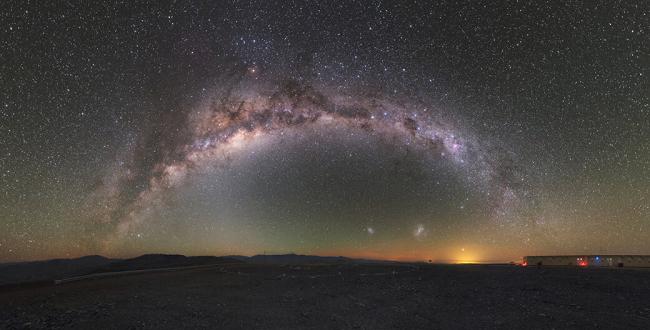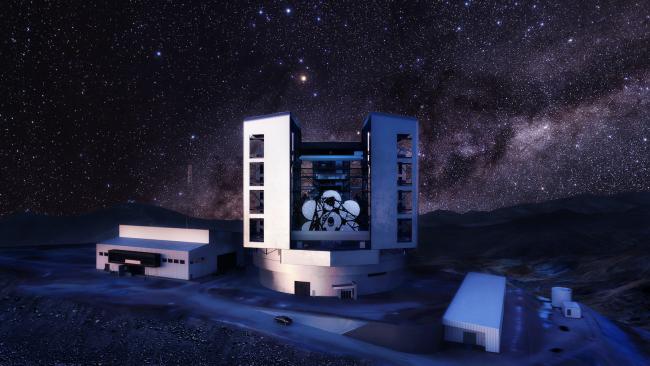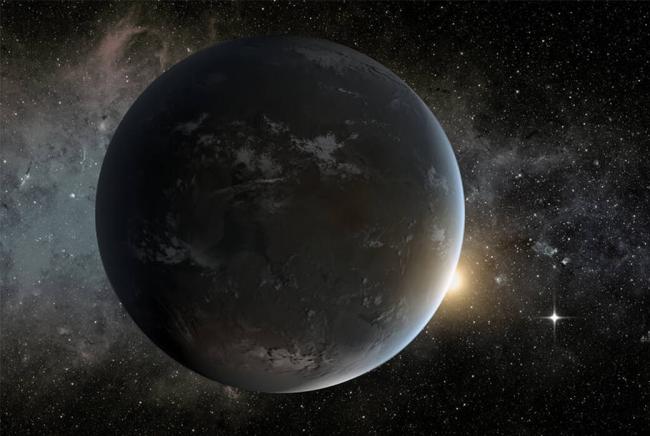Why do we need an extremely large telescope like the Giant Magellan Telescope?
Are we alone? What are dark matter and dark energy? What is the fate of the Universe? The Giant Magellan Telescope may soon answer these profound questions.

A New Tool For Discovery
Seven enormous mirrors—each over 27 feet in diameter—shaped and polished to one-millionth of an inch. Next generation instrumentation, capable of resolving the slightest stellar wobble. Adaptive optics that cancel out Earth’s atmospheric effects, giving unparalleled views of the cosmos. A remote mountaintop in the Chilean desert—one of the world’s premier observing sites.
These components, essential to the construction of the Giant Magellan Telescope (GMT), offer a resolving power ten times that of the Hubble Space Telescope. The GMT will fuel a new era of discovery in astrophysics.
The 2020 Decadal Survey for Astronomy and Astrophysics has recommended federal support for the final construction stages of the Giant Magellan Telescope (GMT) as part of the U.S. Extremely Large Telescope Program (US-ELTP). The Center for Astrophysics | Harvard & Smithsonian (CfA) is part of an international consortium contributing key instrumentation technology and philanthropic support for the GMT.
The highly anticipated report ranked the US-ELTP as the top frontier project for ground-based observatories and detailed that building an extremely large telescope “is absolutely essential if the United States is to maintain a position as a leader in ground-based astronomy.”
“This endorsement from the decadal survey is tremendous and validates the years of hard work our scientists have spent developing GMT technologies,” says Charles Alcock, GMTO board member and director of the CfA.

Joining the Search for Life
Thousands of exoplanets have been discovered, dozens of which reside in the “habitable zone”, where liquid water, and therefore life, might exist. But we have been limited in our ability to study exoplanet chemistry. To date, no telescope has the light collecting power or the right instruments to uncover these vanishingly faint signals.
The needle in this cosmic haystack is atmospheric oxygen, and finding it in an exoplanet’s atmosphere would be a strong signifier of biological activity. Unlike previous telescopes, the GMT and its GMT-Consortium Large Earth Finder (G-CLEF) spectrograph are designed specifically to find hints of extraterrestrial life.

Dark Matter and Dark Energy
You, everything around you, and everything we see in the night sky is made of normal matter. But normal matter only makes up 5% of the mass and energy in the Universe. What else is out there and how do we know?
Dark matter composes 27% of the mass and energy of the Universe and is located in galaxies and clusters of galaxies. Dark matter is invisible but we can observe how it affects the motion of other objects and how it bends light. Without it, our galaxy would tear itself apart.
Dark energy is everywhere. Imagine throwing a ball in the air. Instead of arcing back to the Earth, it pays gravity little mind and accelerates into space. That is what dark energy is doing to our Universe. Scientists now believe that dark energy makes up 68% of the Universe. We can measure it, but what is it?

Only five percent of the universe is made up of normal matter.
The GMT will advance our understanding of these mysterious concepts. With its massive mirrors and precise instrumentation, the GMT will find the earliest objects at the extreme edge of the observable Universe and usher in a new era of cosmology.

Our Work
The Center for Astrophysics | Harvard & Smithsonian is a partner in the GMT Consortium, an international group of organizations who will fund, build, and operate the completed telescope.
Smithsonian Secretary Lonnie Bunch congratulated CfA on the recent endorsement of GMT as a national priority: “This extraordinary endorsement means that the GMT is one step closer to completion, thanks in part to the tremendous efforts of our Smithsonian scientists and engineers. SAO staff members have been developing technology for the GMT for over a decade and championing the cause for its construction.”

Our efforts include a collaboration between CfA scientists and engineers to build the G-CLEF instrument that will allow the GMT to identify the signatures of atmospheric oxygen. G-CLEF and the GMT might tell us if we are not alone in the Universe.
G-CLEF will also look for the dimmest galaxies, theoretically dominated by dark matter. There should be hundreds of these galaxies around the Milky Way, but we have only found a few dozen. G-CLEF has the ability to find these galaxies, or upend our understanding of galaxy formation.
G-CLEF will also test fundamental physics. What if the constants of modern physics aren’t really constant? By observing the farthest objects in the Universe, we can see if the laws of nature have changed over time, challenging everything we thought we knew.
We don’t yet know what G-CLEF and the GMT will show us. However, we do know what we’ll be looking for.
This post is compiled from news releases and blog posts originally published for the Center for Astrophysics | Harvard & Smithsonian.
The Smithsonian Astrophysical Observatory (SAO), founded in 1890, is a research center of the Smithsonian Institution with the mission to advance our knowledge and understanding of the universe through research and education in astronomy and astrophysics. Affiliated with the Harvard College Observatory, SAO created the world’s first satellite-tracking network, establishing the organization as a pioneer in space science research. In 1973, the Smithsonian and Harvard created the joint Center for Astrophysics | Harvard & Smithsonian.
Key areas of research include exoplanets, the sun and solar weather, asteroids and comets, and “The Extreme Universe” that includes the study of black holes, pulsars, supernovae, white dwarfs, neutron stars, and magnetars.
Posted: 17 November 2021
-
Categories:
Astrophysical Observatory , Collaboration , Feature Stories , News & Announcements , Science and Nature








This does sound exciting! There is so much more to learn about our universe. I am hoping with the involvement of the Smithsonian in the building of this enormous machine, that we can help inform how the construction and the people coming into Cerros Las Campanas interact with local communities and especially Indigenous communities. The Indigenous people are the first astronomers and astrophysicists in a place, after all, and in all areas of life, we are seeing how important Indigenous science is. I hope what we have learned about what has been done well and what has been done badly in the building of large telescopes, in lands that are not our own, can help us act in the advancement of all three of our objectives: science, art and the humanities.